Last updated on June 3rd, 2023
64. Brazil hasn’t been involved in a war since 1870.
65. In its official language, Brazil is also called as “Pindorama” meaning “land of the palm trees”.
66. There are 26 states in Brazil and a Federal district that contains its capital city “Brasilia.”
67. Today, almost 87% of Brazil’s population lives in urban areas.
68. Sao Paulo is the richest and the most populated state in Brazil. It is also the largest city in South America.
69. Sau Paulo is Brazil’s economic and demographic heartland.
70. Brazil has more than 4000 airports, which is fewer than the U.S., which has the world’s highest number of airports.
71. The ‘Itaipu Dam’ in Brazil is the second-largest producer of hydroelectricity in the world. It is 7.7 kilometers long and 196 meters high. It is located on the border between Brazil and Paraguay.
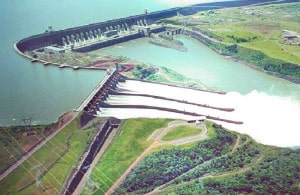
72. The name Brazil is believed to have originated from the name of the wood “pau brazil” (brazilwood), which was the first product that the Portuguese used to their advantage commercially.
73. Brazil can also be called as the “land of contrasts.”
74. The majority of people of African descent live in the Northeast, Brazilians of European and Japanese ancestry live in the South and Southeast region while the North and Central-West is home to the native people.
75. Brazil is the largest country in the world to have Portuguese as an official language. Note that Portuguese speaking people are also referred to as “Lusophones.”
76. Brazil is one of the 17 megadiverse countries.
77. Brazil was known by different names including the “Land of the Holy Cross” (Terra da Santa Cruz) and the “Land of Brazil” (Terra do Brasil).
Economy of Brazil
78. The northern part of the country is poor and underdeveloped while comparatively the southern part is industrialized and rich.
79. The Brazilian Real is the official currency of Brazil. Brazil has changed its currency at least 8 times between 1942 and 1994! Learn more about the Brazilian Real.
80. Brazil’s economy depended mainly on these items: brazilwood (during first few years of colonization), sugarcane (16th and 17th century), gold and diamond (18th century) and coffee (19th and early 20th century).
81. Brazil became energy independent in 2006. Prior to this, it had imported oil as a primary energy source.
Geographical facts about Brazil
82. The country of Brazil occupies half of South America’s total landmass.
83. Brazil is the longest country in the world while Chile is the second-longest. Brazil extends 4,395 kilometers (2,731 mi) from north to south. It is 4,319 kilometers (2,684 mi) from east to west.
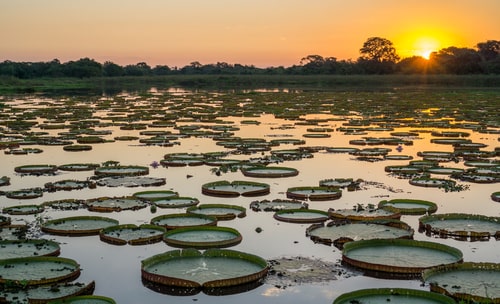
84. The Pantanal is the largest tropical wetland in the world encompassing over 70,000 square miles. Although some part of this region is also shared by the neighboring Paraguay and Bolivia, the majority of it lies in Brazil. The region also has the highest concentration of wildlife on the continent.
85. There are 22 towns and cities in Brazil that have at least 500,000 people living in them.
86. The Guandu River in Rio de Janeiro supplies water to 9 million people in Greater Rio de Janeiro.
87. 4,600 miles of Brazil’s coastline lie on the Atlantic Ocean.
Brazil on the map
88. Brazil borders every South American nation except Ecuador and Chile.
89. Pico da Neblina, in Amazona, is the highest point in Brazil at 2,994 meters (9,822 feet.)
90. Brazil is void of deserts, high mountain, and arctic environments.
91. Brazil has 21 UNESCO World Heritage Sites (Cultural – 14 and Natural – 7.) See the list here.
92. Brazil contains one-third of Latin America’s population. It is also among the world’s major economies.
93. Brazil has ten neighboring countries while China and Russia both have fourteen – the highest number of neighboring countries any nation has.
94. Rio de Janeiro is the second largest city in Brazil. And also the sixth largest in both North and South America.
95. By area, it is the fifth-largest country in the world behind Russia, Canada, the United States, and China.
96. It contains a major portion of the Amazon River basin.
97. Brazil covers 47.3% of the area of South America.
98. According to a recent study, the Mantaro River in southwestern Peru is the source of the mighty Amazon River. The World’s second longest river flows through Brazil, Colombia, Ecuador, Peru, Bolivia, and Venezuela.
99. There are 5 main geographical regions that Brazil is divided into. They are North, Northeast, Central-West, Southeast, and South.
Amazing facts about Brazil
100. Brazilian prisoners can reduce their sentence by 4 days every month for every book they read and write a report about.
101. Prisoners in Brazil could also pedal a stationary bicycle in the prison to provide electricity to a nearby town. This would also help reduce their sentence by a few days.
102. If you were to buy an Apple iPhone in Brazil, you would have to pay almost twice the price for the phone as if you had bought it in the United States.
103. Brazil once listed an aircraft carrier for sale on eBay.
104. Due to financial crises in 1932, Brazilian athletes had to sell coffee on their way to the Los Angeles Olympics. The country has been the world’s largest exporter of coffee for 150 years.
105. In areas around Brazil and Argentina, the earth’s magnetic field has been found to be weakening, specifically for the last 180 years.
106. An island in Brazil called Snake Island has up to 5 snakes per square meter. Civilians are not allowed to visit the island.

107. It occupies the ninth (9th) spot on the list of the most billionaires in the world.
108. Brazil spent US $11 billion for infrastructure improvement in preparation for hosting the 2014 World Cup. However, the U.S. spent only $30 million for the same job in 1994.
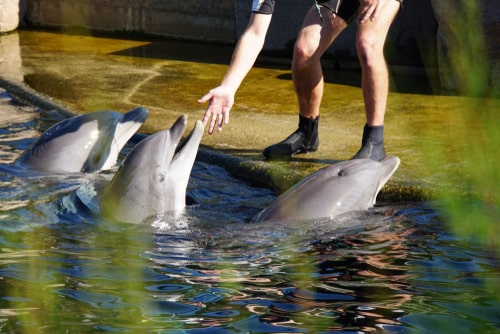
109. Would you believe that in Laguna, dolphins help fishermen catch fish? Some fisherman in Brazil get a bit of help from a herd of well-known bottlenose dolphins. In Laguna, a friendly pod of bottlenose dolphins herd fish toward local fishermen. The dolphins then use a series of tail slaps to signal for the fishermen to throw their nets in the water. This impressive collaboration dates back to at least 1847.
110. Indoor tanning for anyone of any age was banned in 2003 in Brazil, making it the first country to impose such a ban (Using a tanning bed, booth or sunlamp to get a tan is called indoor tanning. Indoor tanning can cause skin cancers.)
111. The only national football team to have never lost to Brazil is Norway. They played four matches; two were played to a draw, while the other two were won by the Norwegian team.

112. A single cashew tree in Natal, Brazil covers an area of 7500 meters thanks to a rare genetic mutation.
113. Brazil lost the 1950 FIFA World Cup final to Uruguay. It is noteworthy here that Brazilians prepared 22 gold medals with the names of their players written on them. A victory song was also prepared to celebrate in the event of a win. The result was, however, unfortunate for Brazil.
114. Brazil won the FIFA World Cup in 1958 when it beat Sweden 5-2 in the final and lifted the World Cup trophy for the first time.
115. Brazil exported more than half a million handguns to the U.S. in 2010; making it the largest exporter of guns during that period.
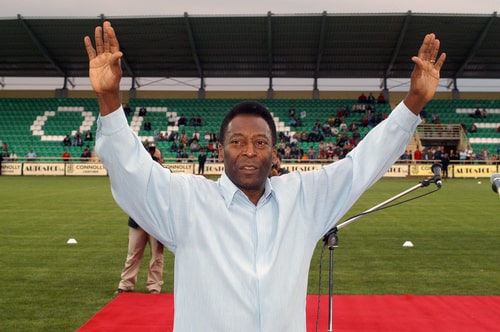
116. When Pele and Garrincha played together, Brazil never lost a game of soccer.
117. In every city in Brazil, there is at least one soccer stadium.
118. In 2005, a Nike ad starring Ronaldinho achieved more than 1 million views on YouTube; making it the first YouTube video to reach that mark.
119. It is the world’s largest market for ‘crack cocaine.’
120. In the 1980s, Brazil became the first South American country to accept women in its armed forces.
121. Sugarcane liquor mixed with ice, sugar and crushed lime slices make the Brazilian national drink.
122. Brazil’s first printing press was set up in 1808.
123. The Brazilian Football Confederation was founded in 1914.
124. Corcovado is a mountain in central Rio de Janeiro, Brazil. It is known worldwide for the 38-metre (125 ft) statue of Jesus atop its peak, entitled Cristo Redentor or “Christ the Redeemer”.
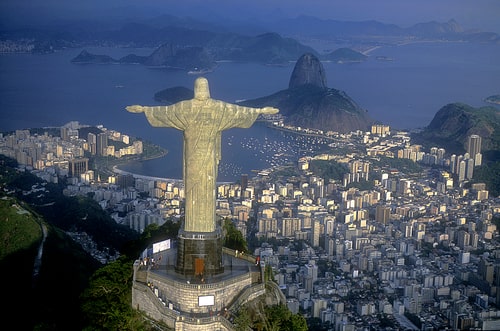
125. São Vicente, the country’s oldest city, is the birthplace of footballer Robinho. The city was also Portugal’s first permanent settlement in the Americas.
126. Sao Paulo is known for traffic jams. A record was set in 2013 when a 309 km long traffic queue developed during evening rush hour.
127. One of Henry Ford’s failed ventures (due to poor crop-disease control) was to create rubber plantations and factories in the middle of the Brazilian Amazon jungle.
128. Searching high and low for an odd themed bar you won’t be able to find elsewhere? Look no further than Brazil and its out-of-left-field trend of Osama Bin Laden themed pubs. Currently, there are two locations–Bar do Bin Laden, located in Sao Paulo, which is run by an Osama lookalike, and Caverna do Bin Laden. Roughly translated, the latter means “Bin Laden’s Cave.” This pool bar and watering hole is located in Niteroi, about 30 miles north of bustling Rio de Janeiro.
129. According to various media reports, a customer at Bar do Bin Laden actually called authorities, indicating that the Al Queda founder was hiding out at the establishment.
130. According to a study, 35% of men from rural Brazil have had sex with an animal. Animals like mares, cows, pigs, and chickens were involved in the acts. Moreover, it was also revealed in the study that the men involved in such an act were also likely to develop cancer of the penis.
131. There is a group of people in Brazil called the Bororo who all have the same blood type: “O.”
132. Take note that Bolivia, not Brazil, is the main exporter of Brazil Nuts.
133. The country has a city called “Nao-Me-Toque.” It literally means “Don’t Touch Me.”
134. Outdoor advertising has been banned in Sao Paulo since 2006.
135. The largest free rock concert ever had 4.2 million attendees. It was held in Rio de Janeiro, Brazil, and featured a performance by Rod Stewart.
136. The largest stock exchange in Latin America is in Sao Paulo, Brazil.
137. Brazil has won the World Cup soccer finals five times.
138. Rio de Janeiro and Sao Paulo are the two Brazilian states whose capitals have names identical to State names.
Some weird laws in Brazil
139. Smoking in public is restricted in Brazil. And one could be fined for the offense as well.
140. Gambling in Brazil is prohibited due to the fact that the government is not able to monitor the winning made in such games. However, online gambling is permitted because the internet is not regulated by the Brazilian territory.
141. Professional hunting since 1967 is banned in Brazil. However, hunting is permitted in certain cases including that done for subsistence.
142. E-cigarettes are banned in Brazil since 2009 on the basis of lack of scientific data that it is safe for health.
143. Use of cell phones in banks is prohibited in Brazil in the interest of its users to prevent robbery and theft.
About the Flag of Brazil
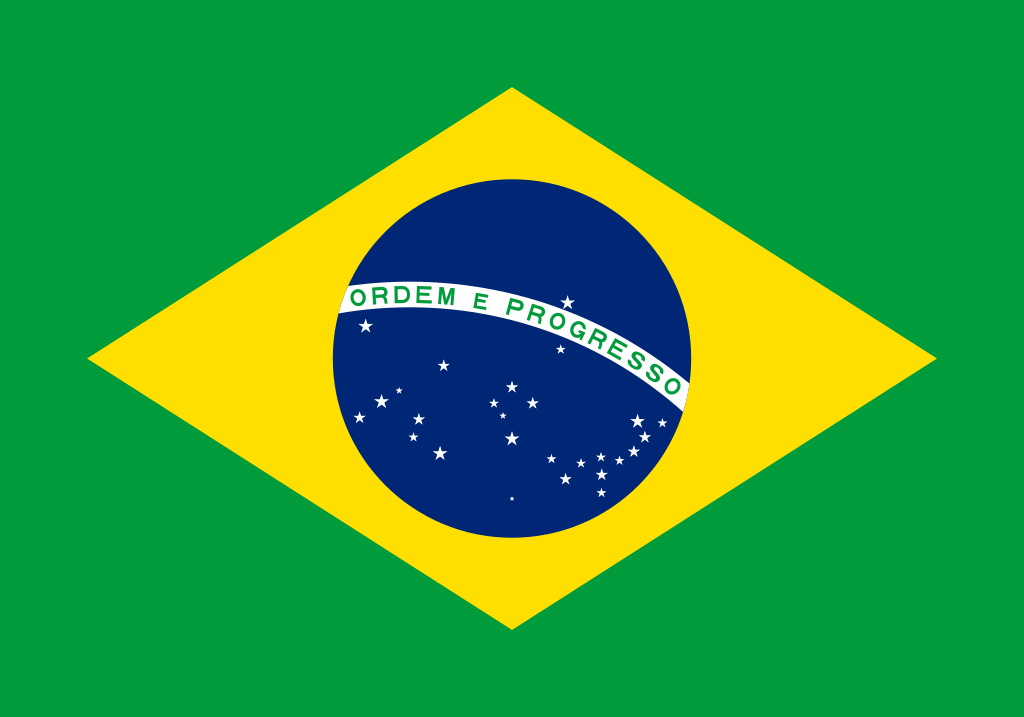
1. Design and Symbolism
The flag of Brazil is a complex representation of the country’s founding principles. It has a green field with a yellow diamond containing a blue celestial globe. A curved white band shows the Brazilian motto in green text: “Ordem e Progresso” (Order and Progress).
Twenty-seven stars appear across the lower half, corresponding to each state in the country. Their arrangement mirrors the visible constellations in the Southern Hemisphere, as seen from Rio de Janeiro in 1889.
Green represents the verdant land, while yellow signifies mineral wealth. Brazil has large gold deposits and other precious metals. The flag’s colors also trace their origins to the imperial colors of the House of Habsburg and the House of Bragança, dating back to when the country had European rulers with royal blood.
2. Adoption
Brazil adopted the flag on November 15, 1889, just four days after the empire became a republic. It comes from the design of philosopher Raimundo Teixeira Mendes, with the help of Decio Villares, Miguel Lemos, and Manuel Pereira Reis.
Teixeira Mendes adheres to the positivist philosophy founded by Auguste Comte. He opposed most wars and believed that nations would eventually disappear. He was also against Christian missionary work toward the indigenous Brazilians, favoring their protection and gradual non-coercive assimilation.
3. Technical Details
Flag dimensions follow the ratio of 7:10. The original 1889 version had 21 stars, while the current 1992 version has 27 stars.
4. History
The Napoleonic Wars during the early 1800s plunged most of Europe into chaos. The Portuguese royal family fled to Brazil and elevated the colony into a co-equal kingdom. After the war, the family returned to the continent except for the king’s son, Dom Pedro.
In 1822, Pedro declared Brazil’s independence from Portugal and raised a new national flag with a green field and yellow diamond containing the imperial coat of arms. The design is from Jean-Baptiste Debret, an award-winning French neoclassical painter.
In 1889, the kingdom became a republic. The Brazilian flag changed to reflect the new political reality. The imperial arms gave way to a blue disk with a thin white band. Stars represent each state, which means the flag requires an update each time a new state forms in the country. Locals affectionately call the flag Auriverde – a word describing the gold-and-green colors.
5. Flag Facts
Republic of the United States of Brazil
One of the proposed flag designs for the newly established republic of Brazil looks much like the US flag. It had 17 horizontal stripes, alternating from green to yellow. The upper left corner has a blue canton with 21 white stars. The provisional president vetoed the design because of the resemblance and the possible confusion it would create.
Star Sizes and Constellations
The stars come in five sizes, corresponding to their relative geographic size. Their clusters on the flag represent nine constellations, including Procyon, Canis Major, Canopus, Spica, Hydra, Crux Australis, Sigma Octantis, Triangulum Australe, and Scorpius.
Positivist Connection
The text on the Brazilian flag (Order and Progress) is a Positivist motto taken from an Auguste Comte quote: “Love as a principle, and order as the basis; progress as the goal.”
Brazil – country at a glance
| Independence | 7 September 1822 (from Portugal) |
|---|---|
| Capital City | Brasíliav (15°47′S 47°52′W) |
| Largest City | São Paulo (23.5505° S, 46.6333° W) |
| Area | total: 8,515,770 sq km land: 8,358,140 sq km water: 157,630 sq km |
| Population | 220,051,512 (2024 est.) |
| Continent | South America |
| Official Language | Portuguese |
| National anthem | "Hino Nacional Brasileiro" (Brazilian National Anthem) note: music adopted 1890, lyrics adopted 1922; the anthem's music, composed in 1822, was used unofficially for many years before it was adopted |
| Location | Eastern South America, bordering the Atlantic Ocean |
| Borders | French Guiana, Suriname, Guyana, Venezuela, Colombia, Peru, Bolivia, paraguay, Argentina, Uruguay |
| Land boundaries | total: 16,145 km |
| Coastline | 7,491 km |
| Currency | Real (R$) (BRL) |
| Religion | Roman Catholic |
| Literacy rate | 94.7% |
| Demonym | Brazilian |
| Suffrage | voluntary between 16 to 18 years of age and over 70; compulsory between 18 to 70 years of age; note - military conscripts by law cannot vote |
| Life expectancy at birth | 76.3 years (2024 est.) Life expectancy at birth indicates the number of years a newborn infant would live if prevailing patterns of mortality at the time of its birth were to stay the same throughout its life. |
| National symbol | Southern Cross constellation |
| National colors | green, yellow, blue |
| Government type | federal presidential republic |
| President | Lula da Silva |
| Terrain | mostly flat to rolling lowlands in north; some plains, hills, mountains, and narrow coastal belt |
| Mean elevation | 320 m |
| Lowest point | Atlantic Ocean 0 m |
| Highest point | Pico da Neblina 2,994 m |
| Climate | mostly tropical, but temperate in south |
| Natural resources | bauxite, gold, iron ore, manganese, nickel, phosphates, platinum, tin, rare earth elements, uranium, petroleum, hydropower, timber |
| Agricultural land | 32.9% |
| Birth rate | 13.2 births/1,000 population (2024 est.) |
| Death rate | 7 deaths/1,000 population (2024 est.) |
| Sex ratio | 0.97 male(s)/female (2024 est.) |
| Industries | textiles, shoes, chemicals, cement, lumber, iron ore, tin, steel, aircraft, motor vehicles and parts, other machinery and equipment |
| Exports | $389.626 billion (2023 est.) transport equipment, iron ore, soybeans, footwear, coffee, automobiles |
| Imports | $346.639 billion (2023 est.) machinery, electrical and transport equipment, chemical products, oil, automotive parts, electronics |
| GDP - per capita (PPP): | $14,100 (2020 est.) |
| Internet country code | .br |
| Calling Code | +55 |
| Drives on the | Right |
| Table last updated | August 14, 2024 |
